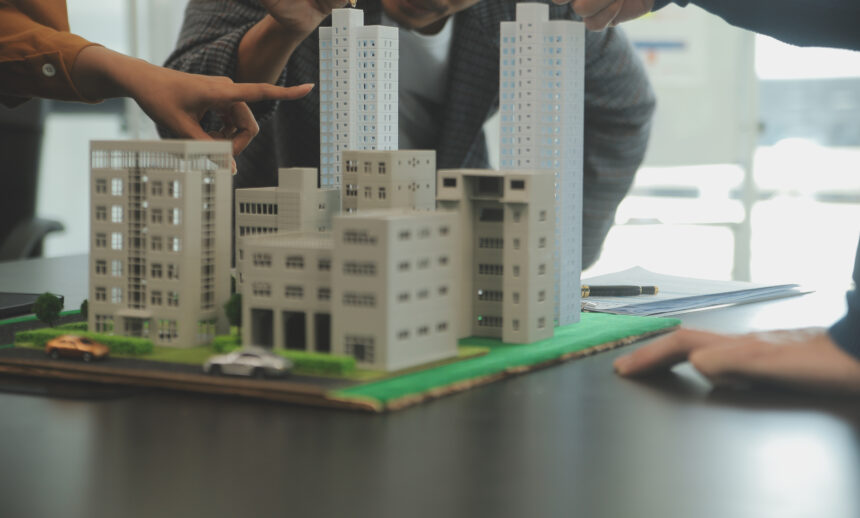City planning plays a crucial role in shaping the future of real estate. From zoning laws to infrastructure development, urban planning directly impacts property values, investment opportunities, and the overall growth of cities. Smart planning can transform underdeveloped areas into thriving economic hubs, while poor planning can lead to congestion, declining property values, and inefficient land use. This article explores how city planning influences real estate, the key factors that drive property development, and what investors should consider when analyzing urban growth.
The Role of Urban Planning in Real Estate
Urban planning is the process of designing and regulating land use, transportation networks, public spaces, and infrastructure. It ensures that cities grow in an organized and sustainable manner, balancing economic growth with environmental and social needs.
How Urban Planning Affects Real Estate:
- Determines zoning laws that regulate residential, commercial, and industrial developments
- Influences property values through infrastructure investments and public amenities
- Shapes housing supply by controlling building densities and land use
- Impacts traffic flow and accessibility, affecting desirability and convenience
- Drives economic development, attracting businesses and creating job opportunities
A well-planned city enhances real estate investments by providing a structured and predictable growth pattern that benefits property owners and developers.
Zoning Laws and Their Impact on Property Value
Zoning laws define how land can be used in a city. They dictate whether an area is designated for residential, commercial, industrial, or mixed-use development. These regulations influence property prices, development potential, and neighborhood characteristics.
Key Zoning Classifications:
- Residential Zoning – Restricts areas for homes, apartments, and condos
- Commercial Zoning – Allocates space for businesses, offices, and retail centers
- Industrial Zoning – Allows factories, warehouses, and manufacturing plants
- Mixed-Use Zoning – Encourages developments that combine residential, commercial, and recreational spaces
How Zoning Affects Real Estate Investment:
- Limited Supply Increases Property Value – If zoning restricts development in a high-demand area, property prices rise
- Rezonings Can Boost Investment Potential – When an area is rezoned from residential to mixed-use or commercial, property values can increase significantly
- Zoning Restrictions Can Stifle Growth – Overly strict zoning laws can lead to housing shortages and inflated prices
Investors should pay close attention to zoning regulations when evaluating potential real estate markets, as zoning changes can create significant opportunities or risks.
Infrastructure Development and Real Estate Growth
Infrastructure investment is one of the most powerful drivers of real estate appreciation. Roads, public transportation, utilities, and public spaces all contribute to the desirability and functionality of a city.
Key Infrastructure Developments That Boost Property Value:
- Highways and Roads – Improved connectivity increases accessibility and demand for nearby properties
- Public Transit Expansion – Areas with subway stations, bus routes, or commuter rail access see rising property values
- Utilities and Smart City Technology – Reliable water, electricity, and high-speed internet make cities more livable and attractive
- Green Spaces and Public Parks – Access to recreational areas enhances neighborhood appeal and raises property values
- Commercial Hubs and Business Districts – Large office complexes and retail centers drive demand for residential and rental properties nearby
When evaluating real estate investments, looking at planned infrastructure projects can provide insight into which areas will appreciate the fastest in the coming years.
Housing Policies and Affordability Trends
City planners establish housing policies that influence affordability, housing supply, and rental markets. Policies such as rent control, affordable housing mandates, and building incentives affect both developers and homeowners.
How Housing Policies Impact Real Estate:
- Affordable Housing Mandates – Require developers to allocate a percentage of new units as low-income housing, impacting project profitability
- Rent Control Regulations – Limit rental price increases, which can affect investor returns and housing supply
- Incentives for High-Density Housing – Encourage development in urban centers, increasing supply and stabilizing home prices
- Short-Term Rental Restrictions – Regulate Airbnb and vacation rentals to balance housing availability with tourism demand
Investors need to understand local housing policies as they can affect rental income potential, property appreciation, and market demand.
Smart Cities and the Future of Urban Development
Smart cities leverage technology and data-driven planning to improve efficiency, sustainability, and livability. These cities incorporate digital infrastructure, AI-driven traffic management, and eco-friendly urban design.
Smart City Features That Impact Real Estate:
- 5G Connectivity and High-Speed Internet – Enhances business growth and attracts remote workers
- Energy-Efficient Buildings and Smart Grids – Reduce utility costs and make properties more sustainable
- AI-Powered Traffic and Public Safety Systems – Improve mobility and security, increasing neighborhood appeal
- Autonomous Transportation and EV Charging Stations – Future-proofs cities for next-generation commuting
Cities that adopt smart planning principles often experience higher demand for properties, increased investment, and sustainable long-term growth.
The Impact of Gentrification on Property Prices
Gentrification occurs when investment and development lead to the transformation of urban neighborhoods, often increasing property values and attracting higher-income residents. While it can revitalize communities, it can also lead to displacement of lower-income residents.
Pros of Gentrification for Real Estate:
- Increases Property Values and Rental Income – As new businesses and infrastructure arrive, demand for housing rises
- Revitalizes Neglected Areas – Upgrades old buildings, improves public spaces, and attracts commercial investments
- Enhances Safety and Public Services – More funding for police, schools, and transportation improvements
Cons of Gentrification:
- Displacement of Long-Time Residents – Rising costs may force lower-income families to relocate
- Higher Taxes and Living Costs – Property taxes increase as property values rise
- Cultural and Community Shifts – Long-time businesses and local character may be replaced by high-end developments
Understanding where gentrification is happening can help investors identify high-growth areas while being mindful of community impact.
Real Estate Investment Strategies Based on City Planning Trends
Investors who understand urban planning trends can position themselves for higher returns and reduced risks.
Key Strategies for Real Estate Investors:
- Invest Near Infrastructure Projects – Areas with upcoming transit expansions, highway improvements, or airport expansions tend to appreciate quickly
- Focus on High-Growth Zoning Areas – Properties in zones that allow mixed-use or high-density development offer higher long-term potential
- Consider Sustainability Initiatives – Cities with strong green policies and energy-efficient incentives tend to attract more residents and businesses
- Monitor Housing Policy Changes – Stay informed about rent control laws, tax incentives, and short-term rental regulations that may impact profitability
By aligning investments with city planning initiatives, investors can maximize returns and capitalize on urban growth trends.
Final Thoughts: Why City Planning Shapes the Future of Real Estate
Real estate values are deeply influenced by zoning laws, infrastructure investments, housing policies, and smart city initiatives. Understanding how city planning shapes urban development allows investors, homeowners, and developers to make informed decisions that align with future growth trends.
The most successful real estate investors don’t just look at today’s market conditions—they analyze how cities are planning for the future. By identifying emerging investment hotspots, infrastructure projects, and zoning changes, they position themselves ahead of market shifts and maximize their investment potential.
FAQs
1. How do zoning laws impact real estate prices?
Zoning laws restrict land use, affecting housing supply and demand. Areas with limited residential zoning often see higher prices due to constrained supply.
2. Why does infrastructure investment increase property values?
Better transportation, utilities, and public amenities make neighborhoods more desirable, increasing demand and driving up real estate prices.
3. What should investors look for in city planning documents?
Investors should review zoning maps, future infrastructure plans, and economic development strategies to identify high-growth areas.
4. How does gentrification affect real estate investments?
Gentrification raises property values and rental income but may also lead to higher taxes and affordability concerns.
5. Are smart cities the future of real estate?
Yes, cities incorporating technology and sustainable planning will likely attract more businesses and residents, boosting long-term property values.






